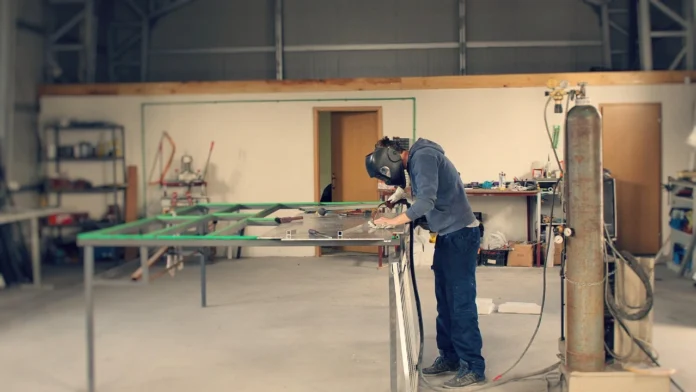Coordinating design and fabrication for complex industrial projects requires careful planning, clear communication, and a thorough understanding of technical requirements. From initial concept to final assembly, teams must align engineering designs with fabrication capabilities, ensuring that materials, timelines, and workflows are efficiently managed. Detailed documentation, regular reviews, and proactive problem-solving help prevent delays and maintain quality standards throughout the project lifecycle.
Collaboration between designers, engineers, and fabricators becomes even more critical when dealing with highly specialized facilities. For instance, a data center builder must seamlessly integrate electrical, mechanical, and structural systems to meet performance and safety standards. By fostering coordination across disciplines, project teams can reduce errors, improve efficiency, and deliver complex industrial solutions that meet operational and technical expectations.
Table of Contents
The Importance of Coordination in Industrial Projects
Precise alignment between design and fabrication functions as the backbone of every successful industrial project. Timing and precision, especially in mission-critical settings like petrochemical plants, power generation facilities, and data centers, demand a methodical approach to merging these disciplines. Miscommunication or sequencing errors during hand-offs can cascade into costly delays, missed deadlines, and operational risks. Coordinating fabrication sequences with the overarching project schedule ensures all elements arrive correctly and on time at the construction site, lowering the risk of unexpected disruptions and accelerating the path to commissioning.
Common Challenges in Design and Fabrication Coordination
Smoothing the interface between design and fabrication is rarely straightforward. Project teams often face:
- Design Misalignment: If early design documentation fails to consider fabrication constraints, the result can be costly field modifications and material waste.
- Communication Lapses: Breakdowns in relaying design intent or feedback frequently lead to misinterpretation of specifications, resulting in errors that multiply downstream.
- Inefficiencies and Downtime: Misaligned schedules force construction teams to wait on components, while unexpected field adjustments disrupt progress and inflate labor costs.
Strategies for Effective Coordination
Industrial leaders advocate a series of proven strategies to bridge the gap between design and fabrication:
- Early Collaboration: Involving fabricators during initial design reviews ensures design intent matches fabrication realities, empowering value engineering and constructability analysis upfront.
- Integrated Project Delivery (IPD): Adopting IPD practices creates shared accountability among owners, designers, and fabricators, unlocking innovative solutions and reducing siloed decision-making.
- Regular Communication: Formalizing touchpoints such as weekly coordination meetings ensures stakeholders remain aligned on evolving designs, fabrication timelines, and construction logistics.
- Use of Building Information Modeling (BIM): Leveraging BIM platforms enables all parties to visualize and coordinate complex assemblies in a shared digital space, vastly reducing errors and streamlining fabrication sequencing.
Modern approaches, such as Design for Manufacturing and Assembly (DfMA), are transforming traditional project workflows by ensuring that design and fabrication considerations are integrated from the outset.
The Role of Digital Tools in Enhancing Coordination
Digital transformation is rapidly redefining how industrial projects synchronize design and fabrication. Advanced modeling software, cloud-based project management platforms, and robotic layout systems bring unprecedented accuracy and transparency. For instance, robotic layout technology can transform a coordinated BIM model into precise, real-world field layouts, eliminating manual errors and accelerating complex installations. Cloud-based document management ensures all project stakeholders, from the job site to executive offices, work off the latest drawing sets and schedules—a key enabler for real-time coordination and informed decision-making.
Also Read : How AI Is Reshaping Traditional RFP Software
Conclusion
Integrating design and fabrication is a strategic differentiator for today’s industrial construction leaders. Project teams can consistently deliver higher-quality results, tighter schedules, and lower costs by embedding collaborative workflows, harnessing advanced digital tools, and fostering transparent communication. As complexity in industrial projects continues to grow, stakeholders who master the art and science of coordination will set the standard for reliability, innovation, and sustainable success.
